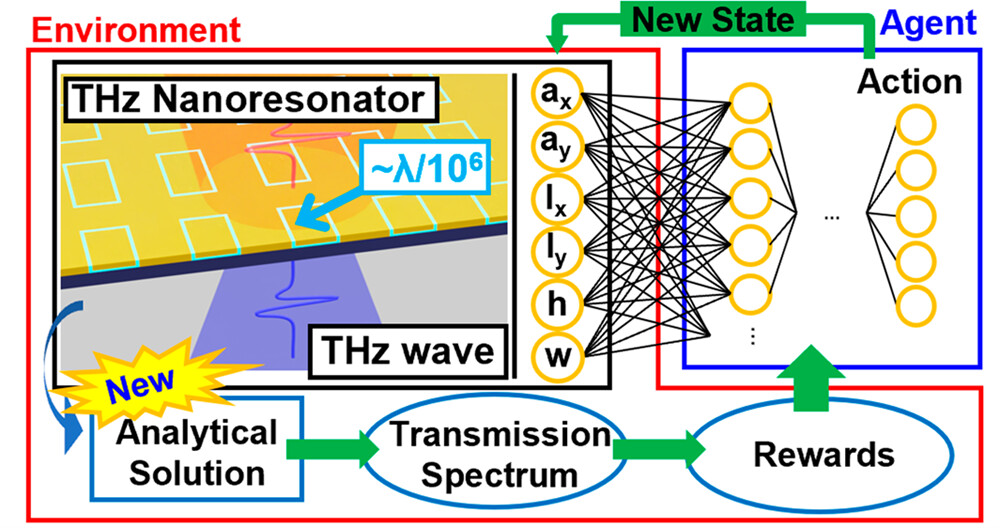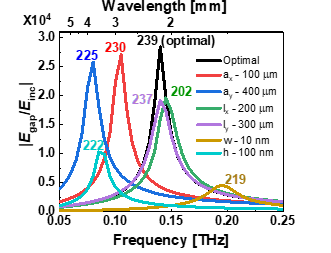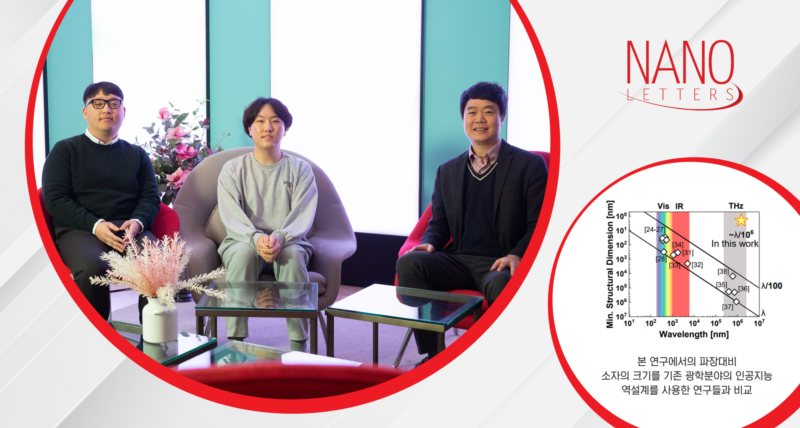A team of researchers, led by Professor Hyong-Ryeol Park from the Department of Physics at UNIST has introduced a groundbreaking technology capable of amplifying terahertz (THz) electromagnetic waves by over 30,000 times. This breakthrough, combined with artificial intelligence (AI) based on physical models, is set to revolutionize the commercialization of 6G communication frequencies.
Collaborating with Professor Joon Sue Lee from the University of Tennessee and Professor Mina Yoon from the Oak Ridge National Laboratory, the research team successfully optimized the THz nano-resonator specifically for 6G communication using advanced optimization technology. By integrating AI learning based on a physical theoretical model, the team has enabled the efficient design of THz nano-resonators on personal computers, a process that was previously time-consuming and demanding even with supercomputers.
Through a series of THz electromagnetic wave transmission experiments, the team evaluated the efficiency of the newly developed nano-resonator. The results were astounding, with the electric field generated by the THz nano-resonator surpassing general electromagnetic waves by over 30,000 times. This achievement represents an incredible efficiency improvement of over 300% compared to previously reported THz nano-resonators.

Figure 1. Full scheme of an inverse design method using an analytical solution based on the modal expansion.
Traditionally, the AI-based inverse design technology focused on designing optical device structures within visible or infrared areas, which were only a fraction of the wavelength. However, applying this technology to the 6G communication frequency range (0.075-0.3 THz) presented significant challenges due to the much smaller scale, approximately one-millionth the size of the wavelength, explained Professor Park.
To overcome these challenges, the research team devised an innovative approach by combining a new THz nano-resonator with an AI-based inverse design method based on a physical theoretical model. This groundbreaking approach enabled the optimization of the device in less than 40 hours, even on personal computers, compared to the previously required tens of hours for a single simulation or potentially hundreds of years for a single device optimization.

Figure 2. At 0.14 THz, the optimal structure (black line) has the following parameters: ax = 10 μm, ay = 200 μm, lx = 215 μm, ly = 625 μm, h = 30 nm, and w = 2 nm. One specific parameter changes the field enhancement (|Egap/Einc|) spectra and Rewards, while the other parameters remain constant.
Researcher Young-Taek Lee (Department of Physics, UNIST) , the first author of the study, highlighted the versatility of the optimized nano-resonator, stating its implications for ultra-precise detectors, ultra-small molecular detection sensors, and bolometer studies. He further added, “The methodology employed in this study is not limited to specific nanostructures but can be extended to various studies using physical theoretical models of different wavelengths or structures.”
Professor Park emphasized the significance of understanding physical phenomena in conjunction with AI technology, stating, “While AI may appear to be the solution to all problems, comprehending physical phenomena remains crucial.”

Figure 3. (a and b) Microscope images of the optimal THz nanogap loop array. (c) Transmission electron microscope (TEM) image for the nanogap area.
The research findings have been published in the online version of Nano Letters on December 7, 2023. This work has received support from the National Research Foundation of Korea (NRF), the Ministry of Science and ICT (MSIT) under the High-Potential Individuals Global Training Program, and the ITRC (Information Technology Research Center) support program by the IITP (Institute of Information and Communications Technology Planning & Evaluation), as well as the 2023 Research Fund of UNIST.
Journal Reference
Hyoung-Taek Lee, Jeonghoon Kim, Joon Sue Lee, et al., “More Than 30 000-fold Field Enhancement of Terahertz Nanoresonators Enabled by Rapid Inverse Design,” Nano Letters, (2023).

















